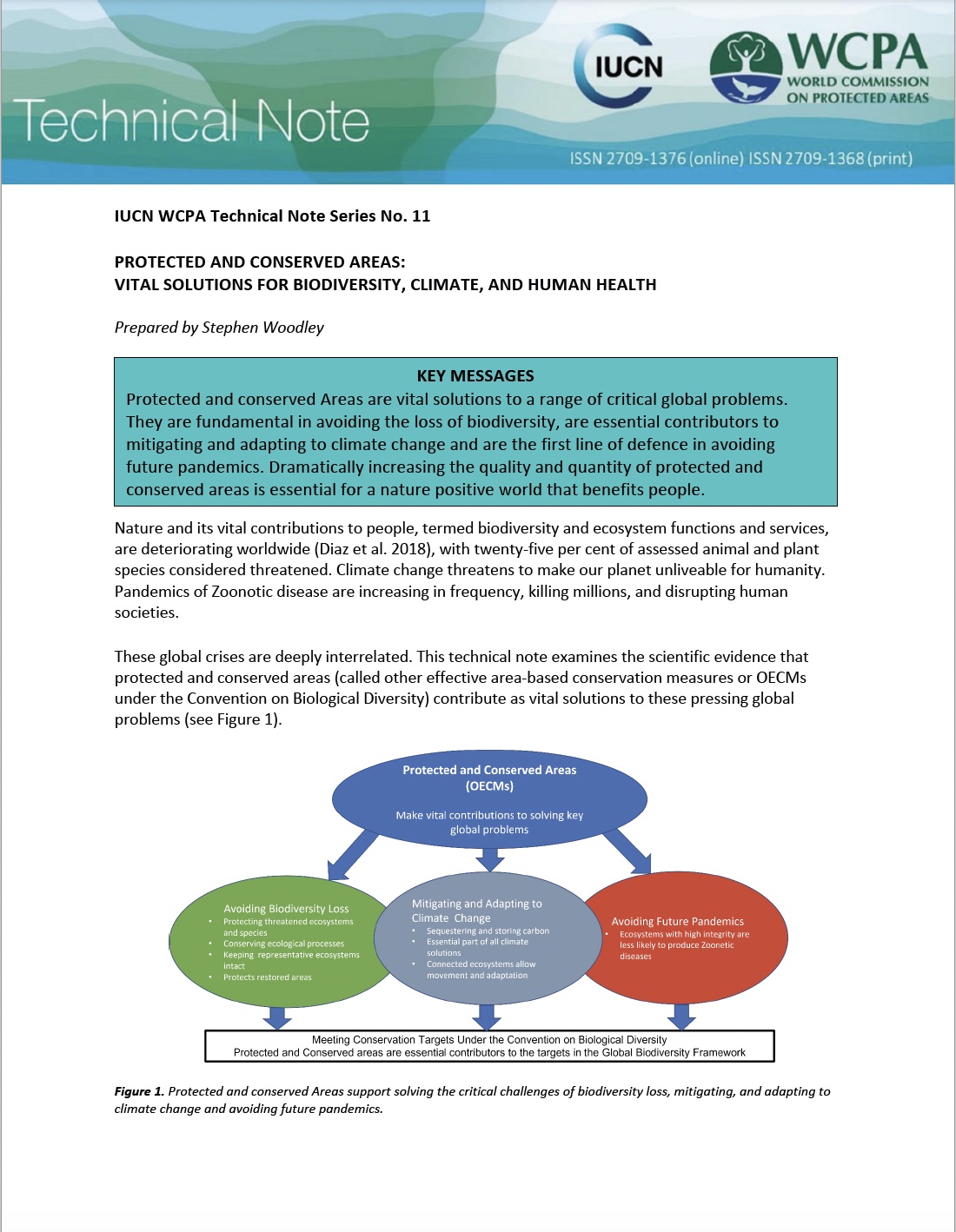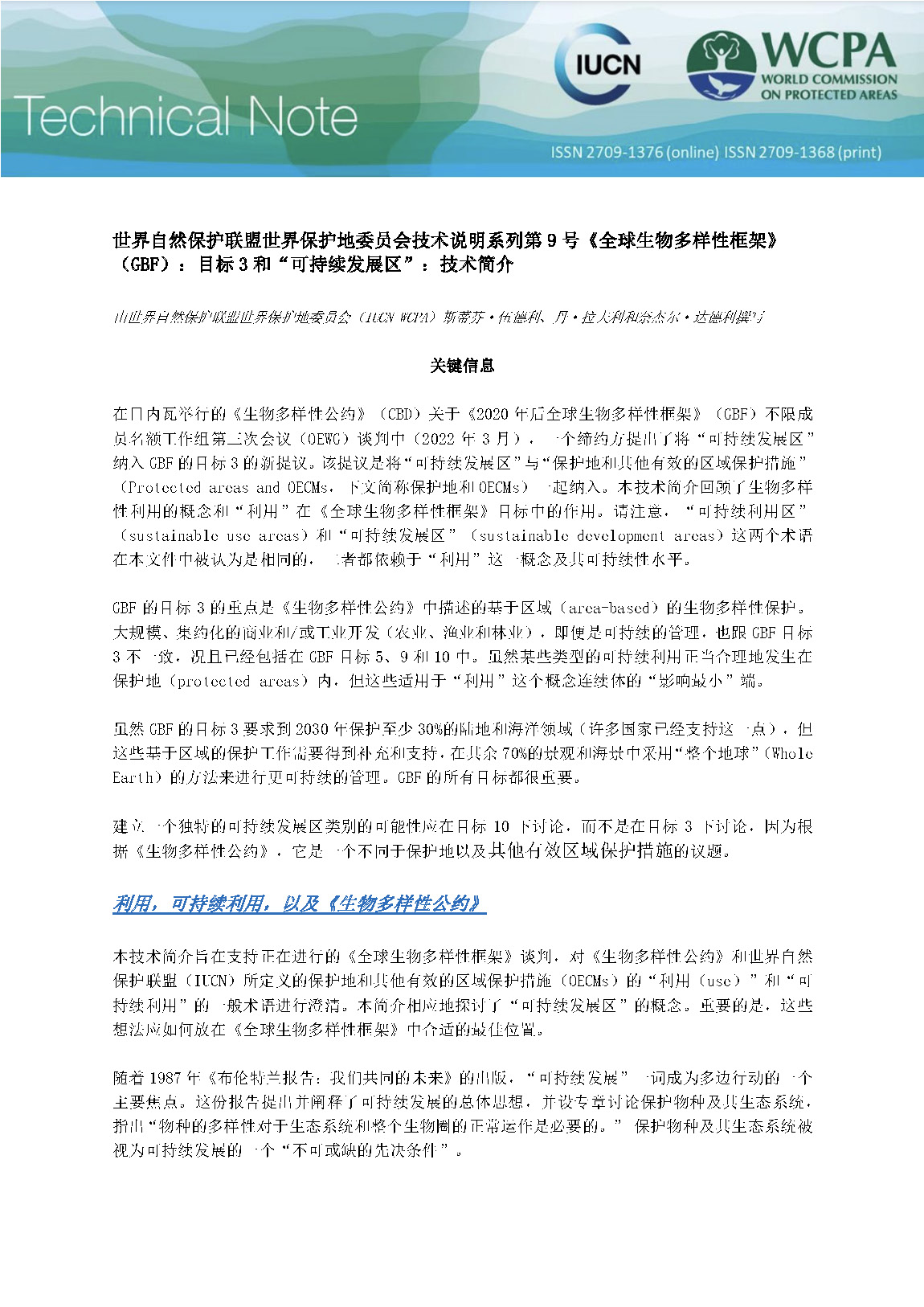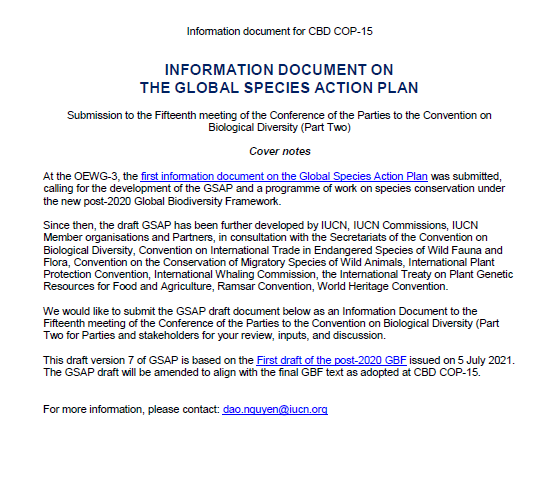Position paper
IUCN Position Paper on the Post-2020 Global Biodiversity Framework OEWG-5 and CBD COP15
IUCN urges Parties to increase efforts, be bolder and more ambitious to finalize and adopt the Post-2020 Global Biodiversity Framework. We call on Parties to conclude negotiations in a spirit of collaboration and compromise for an ambitious framework that will catalyse the necessary action and change to achieve the vision of living in harmony with nature.
Key Messages
To achieve this vision, the Post-2020 Global Biodiversity Framework’s mission should inspire action and be clear in its aim to halt and reverse the loss of biodiversity to achieve a nature-positive world by 2030.
Furthermore, to realise this, the Global Biodiversity Framework must (not in priority order):
- Conserve at least 30% globally of terrestrial, inland water and marine and coastal ecosystems, including all key biodiversity areas (KBAs), in effective and equitable, representative and connected systems of protected areas and other effective area-based conservation measures (OECMs), including territories and areas conserved by indigenous peoples and local communities with their free, prior and informed consent. The Green List of Protected and Conserved Areas Standard helps ensure that area-based conservation is delivering outcomes for people and nature.
- Recognise the contribution of sustainable production systems, including agriculture, to biodiversity conservation and ecological connectivity in production landscapes and seascapes.
- Include a distinct, ambitious goal for ecosystems for 2050, and targets for the restoration of degraded ecosystems globally and aligned with the UN Decade on Ecosystem Restoration. The IUCN Global Ecosystem Typology and the Red List of Ecosystems are credible, widely respected standards to guide action and monitor ecosystems. The Typology provides a comprehensive global classification and indicative maps. The Red List of Ecosystems identifies which ecosystems are threatened.
- Scale-up species conservation through a distinct, ambitious species goal for 2050, and specific targets to prevent extinctions, reduce extinction risk of wild species and ensure that use is safe – for human and animal health-, legal and sustainable, supported by the Global Species Action Plan and a new programme of work on species conservation.
- Include a distinct goal for genetic diversity, in support of the third component of biodiversity.
- Include explicit references to Nature-based Solutions (NbS) in targets 8 and 11; the IUCN Global Standard for Nature-based SolutionsTM provides clear parameters for defining NbS and a common framework to help benchmark progress.
- Consistently promote gender equality and integrate comprehensive rights-based and gender-responsive approaches, empowerment of women and girls, youth, indigenous peoples and local communities, and their full, effective and equal participation in its implementation and review.
- Increase financial resources, from all sources, to at least USD 200 billion per year, including new and additional financial resources, and increasing international conservation finance flows to correspond to the share of global biodiversity footprint embedded in international trade, leveraging private finance and improved domestic resource mobilization.
- Eliminate, redirect and reduce at least USD 500 billion per year in harmful subsidies.
CONTACT:
Email




